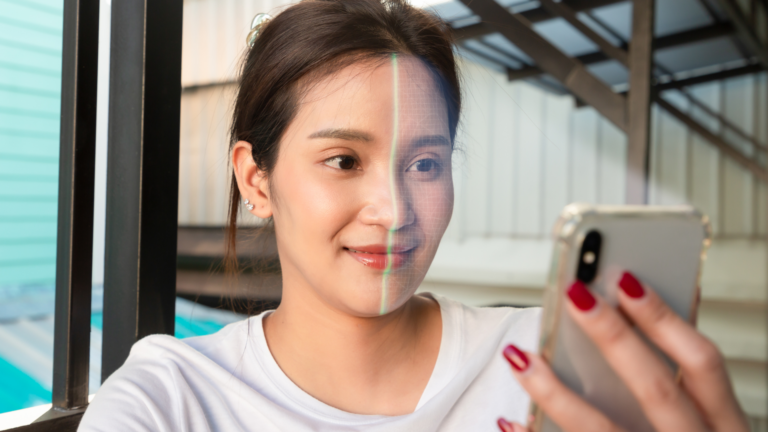Facial Liveness Detection: Innovation in Secure Identity Verification

Introduction
Facial liveness detection is a technology designed to determine whether the face presented for verification is from a live person or a fabricated image. It is a crucial aspect of secure identity verification processes, protecting systems from fraud and ensuring the authenticity of individuals.
Fundamentals of Facial Liveness Detection
Facial liveness detection is an essential component of secure identity authentication. By leveraging advanced technologies such as computer vision and machine learning, it ensures that the person presenting their face for authentication is physically present, rather than impersonating someone else or using a static image.
This technology distinguishes real, live human faces from lifeless or manipulated images. By accurately verifying facial liveness, organizations can bolster their fraud prevention measures, comply with regulatory standards, and offer their customers a seamless and secure authentication experience.
Types of Facial Liveness Detection
There are two main types of facial liveness detection:
- Passive Liveness Detection: This method analyzes facial features and characteristics captured by a camera to determine if the face presented is live. It does not require active participation from the user, relying instead on automatic image processing and analysis.
- Active Liveness Detection: This method involves dynamic interaction with the user, such as prompting them to blink, smile, or follow specific instructions. These actions demonstrate the user’s real-time presence and liveness.
Technologies Used in Facial Liveness Detection
Various technologies and techniques are employed in facial liveness detection, including:
- Depth Sensors: These measure the distance of different points on the face, creating a three-dimensional map that helps distinguish a real face from a flat image.
- Infrared Cameras: These detect heat and can differentiate living skin from inanimate materials.
- 3D Mapping: This technique creates a precise 3D model of the face, aiding in the detection of realistic images versus forged or masked faces.
- Texture Analysis: Analyzes the skin’s pattern and texture to identify live faces.
- Motion Detection Algorithms: These track natural facial movements and micro-expressions to confirm liveness.
Advanced machine learning models are also used to train systems on vast datasets of real and fake facial data, enabling them to accurately distinguish between live and non-live faces.
Application of Facial Liveness Detection in Various Sectors
While financial institutions face unique challenges related to identity verification, other sectors also benefit significantly from facial liveness detection technology. Key sectors include:
- Healthcare: Ensuring the authenticity of patients and medical professionals in telemedicine, reducing fraud in healthcare services, and protecting patient data.
- Government and Law Enforcement: Enhancing security in border control, voter verification, and secure access to government services.
- Telecommunications: Verifying customer identity during remote onboarding, preventing fraud, and ensuring secure access to services.
- E-commerce and Retail: Providing secure and seamless customer authentication for online transactions, reducing fraud, and enhancing the shopping experience.
- Education: Verifying the identity of students in remote learning environments, ensuring the integrity of online examinations, and preventing academic fraud.
- Travel and Hospitality: Streamlining check-in processes, securing access to amenities, and enhancing customer experiences through reliable identity verification.
Facial Liveness Detection for Financial Institutions
Financial institutions encounter unique challenges in identity verification, such as sophisticated fraud attempts, high-risk transactions, and stringent regulatory compliance. Secure and efficient processes are crucial in these contexts.
Facial liveness detection allows financial institutions to enhance their fraud prevention measures, comply with regulatory standards, and offer their customers a smooth and secure authentication experience. By leveraging this technology, financial institutions can:
- Improve Fraud Prevention: Facial liveness detection can identify and block fraud attempts involving forged or manipulated faces.
- Strengthen Regulatory Compliance: Many financial regulations require robust authentication processes. Facial liveness detection meets these requirements, helping avoid regulatory penalties.
- Streamline Processes: Automated and accurate liveness detection speeds up identity verification processes, providing customers with quick and convenient service.
- Ensure Customer Security: Reliable identity verification protects customers from fraud and identity theft, strengthening their trust in financial institutions.
Conclusion
Facial liveness detection is a key technology in modern identity verification. By utilizing advanced technologies and methods, it can accurately distinguish live individuals from fake images, providing secure, efficient, and regulatory-compliant solutions for various sectors. Facial liveness detection helps build trust, protect clients, and maintain a competitive edge across industries.
